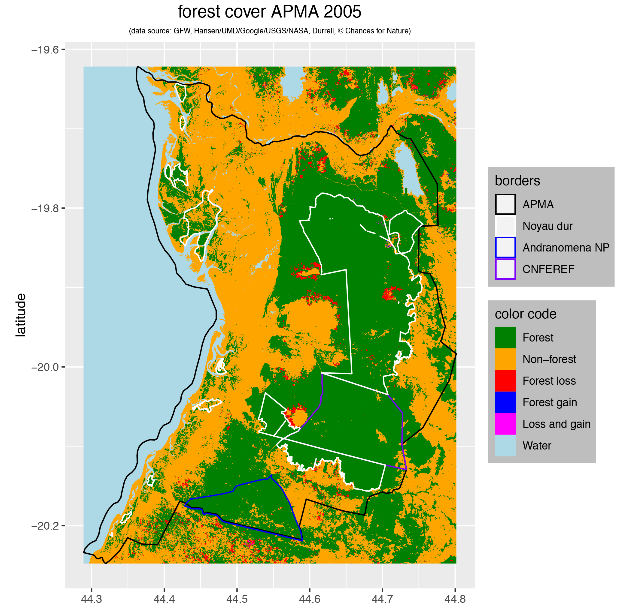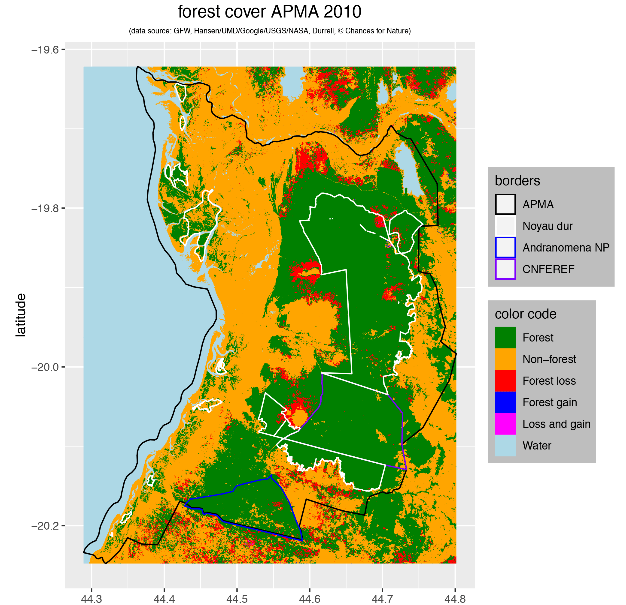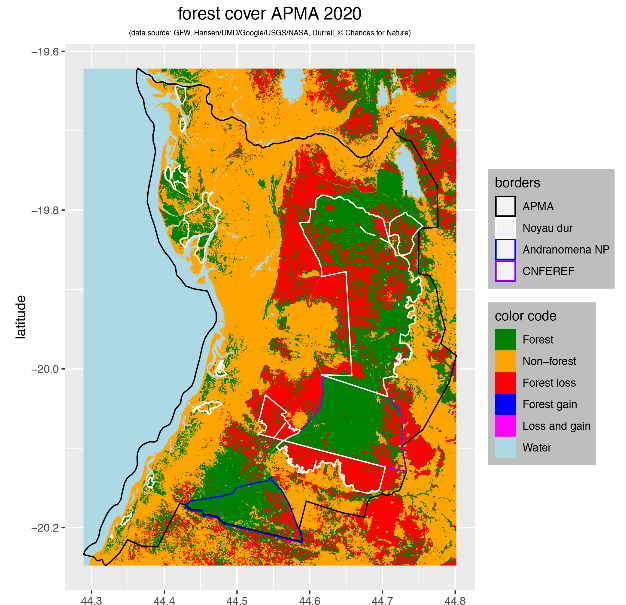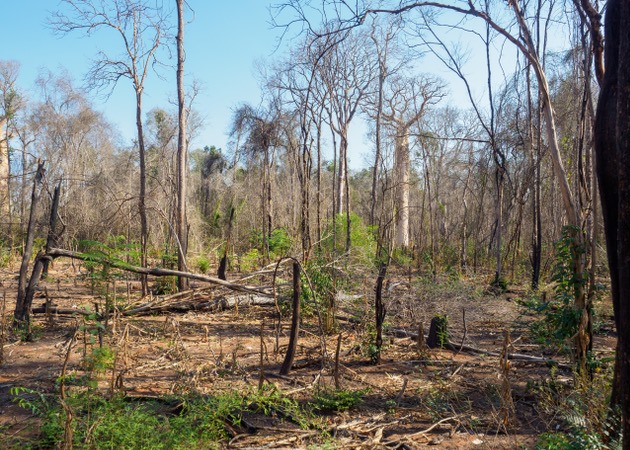
The remaining dry forest of the Aire Protégée Menabe Antimena (APMA), including the Kirindy Forest/CNFEREF is under immense threat. A large fire occurring along the national road adjacent to the Kirindy Forest at the beginning of October 2021 has recently gained much attention on social media.
In fact, the fire is rather the tip on the iceberg of what has been going on in the area for years now. According to deforestation data, the problem has already started in 2010 with increasing deforestation rates reaching a peak in 2018 of almost 10,000 ha within the APMA. Deforestation is due to slash and burn agriculture for cash crops (see Hudson et al. 2019 and Mongabay article).
The problem is known by local organisations working in the area and many efforts are being made to counteract forest destruction. Chances for Nature supports CNFEREF in maintaining the patrolling and protection of Kirindy Forest despite the halt of tourism activities since the beginning of the COVID-19 pandemic.
Organised by USAID Mikajy and supported by the above maps illustrating the forest destruction between 2000 and 2020, representatives of the government of Madagascar have been informed again about this serious situation earlier this year and representatives of the ministry and international embassies have recently visited the area.
If Kirindy and the remaining dry forests of the APMA disappear, this will be a tragedy for the country of Madagascar. The area is home to more than 200 vascular plant species and worldwide the only place of retreat for two species of mammals, the Madame Berthes mouse lemur (Microcebus berthae) and the Giant Jumping rat (Hypogeomys antimena). The Kirindy Forest has always been a major wildlife tourist attraction. The loss of these forests will be a disaster for tourism, and consequently the economy of the Morondava region.
It now needs strong cooperation from all stakeholders on the ground and supportive action from the government of Madagascar to save Kirindy Forest and its inhabitants from disappearing.








